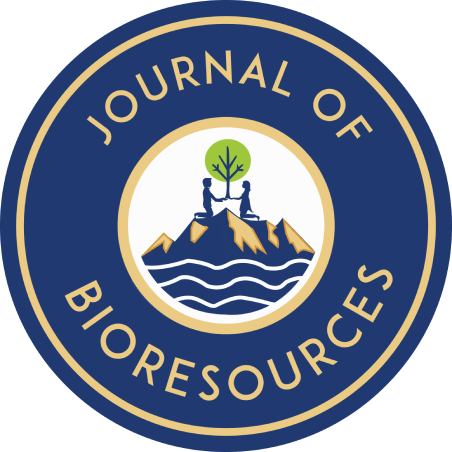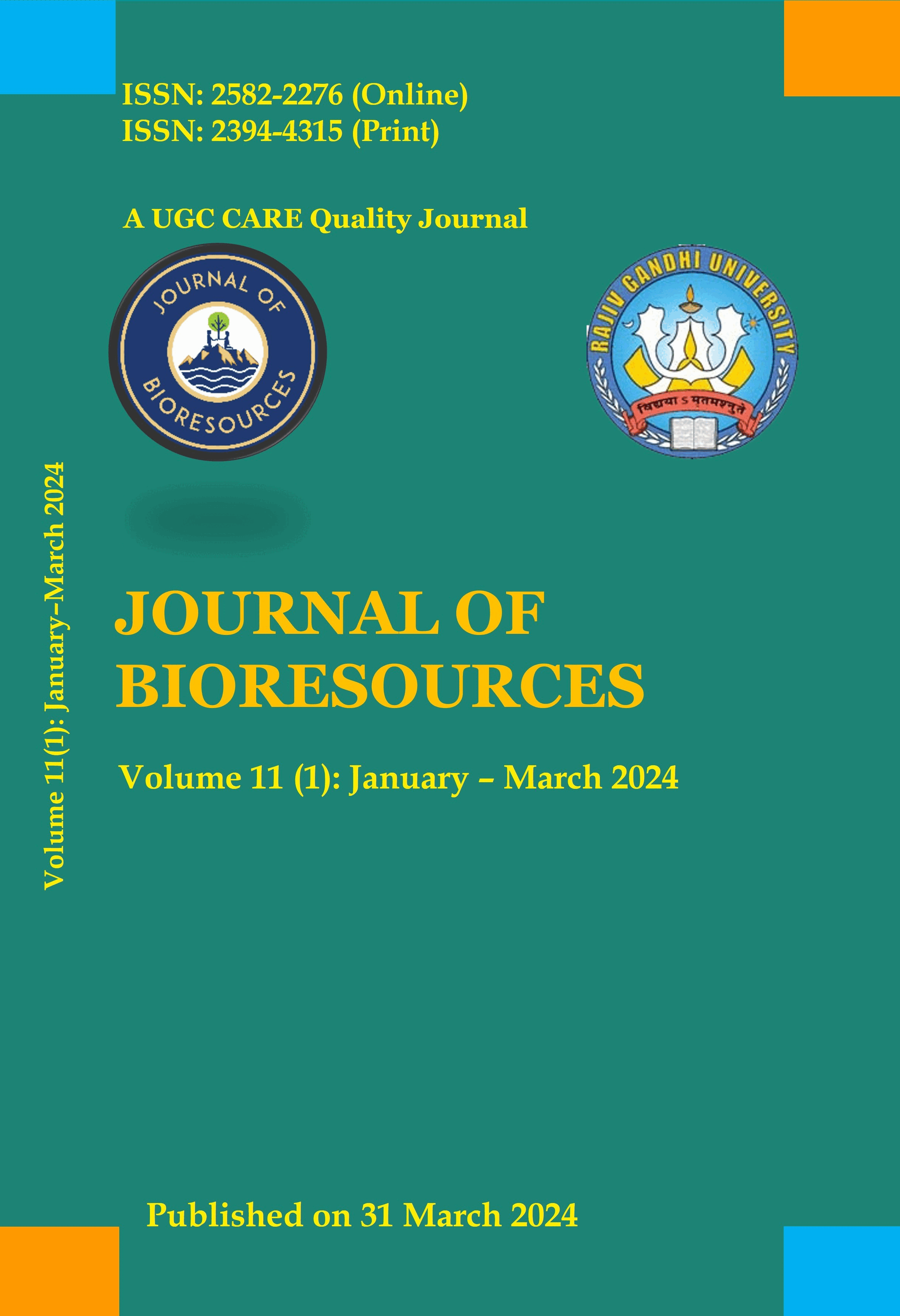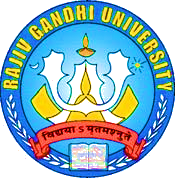Article Preview

Journal of Bioresources
Volume: 11 (1) : January-March 2024

A systematic review of medicinal plants used by indigenous tribal communities of Arunachal Pradesh against diabetes and hypertension
Abstract
Medicinal plants have been proven crucial for the treatment of several ailments. Despite the advent of modern medicines, majority of the global populations continue to rely on plant-based medicines for addressing primary healthcare needs in the rural localities. The different ethnic tribes of Arunachal Pradesh are reported to be a rich repository of ethnomedicinal knowledge and traditional healthcare practices. The indigenous medicinal knowledge system prevalent among the tribal communities could play a pivotal role in discovery of novel phytotherapeutic compounds effective against diabetes and hypertension. This systematic review aimed at identifying the medicinal plants used by the tribes of Arunachal Pradesh for the treatment of diabetes and hypertension. Present review analysed the data of 17 ethnobotanical papers published on 9 tribes of Arunachal Pradesh and shortlisted medicinal plants used for the treatment of diabetes and hypertension. Analysis revealed 16 medicinal plant species against hypertension and 44 medicinal plant species against diabetes used by the ethnic communities of Arunachal Pradesh. The highest cultural importance index value of 0.75 was recorded for Clerodendrum colebrookeanum Walp. which is used by the Adi, Apatani, Galo, Nyishi and Tagin communities. One way analysis of variation revealed significant variation in medicinal plants use with a P-value of 0.02 and F-value of 2.33. Among the 44 medicinal plant species reported against diabetes, the highest cultural importance index value was recorded for Solanum americanum Mill. (0.20) used by Adi, Galo, Nyishi and Tagin tribe. The present analysis results suggested for detailed phytochemistry and pharmacological investigation to unveil the therapeutic potential of the selected medicinal plants reported to be traditionally used against diabetes and hypertension.
Keywords: Medicinal Plants; Ethnic Communities; Hypertension; Diabetes; Systematic Review; Arunachal Pradesh
Introduction
Development of modern medicines have significantly contributed towards effective treatment and management of several human ailments. Pharmacological advancements in 21st century have led to the discovery of novel and affordable drugs for the treatment of diseases that inflict global population, however, majority of the global population in developing countries still prefer plant based traditional herbal medicines for their primary healthcare needs (WHO, 2023). These medicinal plants are generally prescribed to the patients by elderly trained healers of the various tribal communities. The knowledge of these indigenous medicinal practices is well-kept secret in various communities and which is orally transferred to the next generation. Diabetes and hypertension exhibit an overlapping trend which affects the lives of millions of populations across the world (Tsimihodimos, 2018). Diabetes damages the thin blood vessels causing its wall to stiffen and this results in increase of blood pressure leading to hypertension (Smulyan et al., 2016). Diabetes coupled with hypertension elevates the risk of heart diseases and stoke (Kozakova and Palombo, 2016). Approximately, 422 million individuals have been diagnosed with diabetes which is expected to cause mortality of 1.5 million people each year (WHO, 2019). In the past few decades, several antidiabetic drugs have been discovered for treatment of diabetes and hypertension. However, the results and efficacy of these drugs are reported to be inadequate and shows considerable side effects. In addition, the high-cost involvement in diabetes and hypertension treatment exerts substantial economic and clinical burdens on the patients (Vincent et al., 2018). Thus, increase side effect and cost escalation of blockbuster anti-diabetic drugs in the market have forced the patients to shift towards traditional and alternative form of medicines which are mainly based on medicinal plants. The state of Arunachal Pradesh in North East India is inhabited by 28 tribes with rich ethnomedicinal heritages (Tag et al., 2008; Jambey et al., 2017). These tribes are dispersed over different geographical locations and exhibit unique lifestyles, dialects and cultural practices which differ from one another. The indigenous tribes of the state are deeply connected to the forest bioresources and shows extraordinary knowledge of the plant resources and primarily rely on medicinal plants for treatment of commonly known ailments prevalent in their traditional biocultural landscape (Rinyo et al., 2021). Each tribe has their own way of addressing the cause and effect of the ailments or diseases which includes the preference of the medicinal plant, and development of unique methods of herbal formulation for treatment of diabetes and hypertension (Bipul et al., 2017). Perusal of literatures have revealed numerous ethnomedicinal study reports on medicinal plants used by the tribal communities of Arunachal Pradesh. However, majority of the study reports available to date are tribe specific which is related to a particular geographical location. Thus, this systematic review is undertaken with the aim to generate quantitative information regarding the medicinal plants used for the treatment of diabetes and hypertension by different tribes of Arunachal Pradesh, India.
Section Snippets
Methods of data collection and analysis
Data were pooled from published articles using Google scholar, Scopus and PubMed database. The pooled data which did not provide standard ethnobotanical methods, scientific plant names, mode of preparation, informant detail, geographical area and the tribes were excluded from the present analysis (Figure 1). Scientific names of all the medicinal plants obtained were updated following World Flora Online (http://www.worldfloraonline.org/) and included in this study. Cultural Importance Index (CI) was calculated to rank the importance of medicinal plants (Tardío and Pardo-de-Santayana, 2008) CI = UR N Where UR = total number of use reports for a species. N = total number of pseudo-informants.
Result
From the 17 ethnobotanical reports screened, 9 tribes namely, Adi, Apatani, Galo, Tai Khamti, Monpa, Nocte, Nyishi, Singpho and Tagin were using medicinal plants for treatment of diabetes and hypertension. The medicinal plant usage was reported from 40 villages within 9 districts i.e., East Siang, Lohit, Lower Subansiri, Papum Pare, Tirap, Upper Siang, West Siang and Ziro. The published data were gathered by the investigators from local informants using semi structured questionnaires and informal interview and followed by focused group discussion methods. Most of the informants were reported to be the traditional healers (4 studies) and the rest were either local villagers, village Chiefs or elders having indigenous utilization knowledge of the medicinal plants. The informants were found to be in the age group between 30-70 years which comprises of 234 male and 153 female informants
Discussion
The data generated from the current analysis represents the largest dataset for the treatment of diabetes and hypertension by the tribes of Arunachal Pradesh. A total of 16 medicinal plant species belonging to 11 families, and 44 medicinal plant species belonging to 29 plant families have been identified which were reported to be used by the herbal healers for the treatment of diabetes and hypertension respectively. While comparing their cultural importance value (CI) index, Clerodendrum colebrookeanum was the most commonly used plant species for the treatment of hypertension among the six tribes of Arunachal Pradesh. According to Kalita et al (2013) Clerodendrum colebrookeanum is one of the most preferred medicinal plants among the different tribes of North-Eastern India for the treatment of various ailments and particularly reported to be effective against hypertension. Namsa et al (2011) and Tangjang et al (2011) recorded Fidelity level of 100% and Wangpan et al (2019) recorded 96% for C. colebrookeanum for treating hypertension among the Monpa, Nocte, Nyishi, Tagin, Galo and Adi tribes of Arunachal Pradesh. The ability to cure hypertension using C. colebrookeanum may be attributed to the presence of acteoside, martinoside, and osmanthuside β6 (Lokesh and Amitsankar, 2012).
Conclusion
The state of Arunachal Pradesh is blessed with rich biodiversity and traditional ethnomedicinal knowledge associated with treatment of diabetes and hypertension used by the 28 tribes in their native biocultural landscape. From the present analysis of important ethnomedicinal literatures, it is confirmed that Clerodendrum colebrookeanum Walp and Solanum americanum Mill. are the most preferred plant species among the tribes of Arunachal Pradesh for the treatment of hypertension and diabetes respectively. However, it is also evident from the literatures that documentation of ethnomedicobotanical knowledge of all the major tribes of Arunachal Pradesh is currently lacking which need further field investigations to unveil the hidden secrets of the rural folk healing system. Majority of the present secondary data were found to be obtained from traditional healers which were gathered by investigators by using structured, semi-structures questionnaire format and focused group discussions. Thus, focused endeavour should be made for the validation of the ethnobotanical claims of on some of these important medicinal plants with high CI index by isolating the bioactive phytocompounds effective against diabetes and hypertension.
Acknowledgements
The author is thankful to the Head, Department of Botany, Rajiv Gandhi University, Rono Hills, Doimukh, Arunachal Pradesh for their encouragement and support.
Author contributions
The author has solely contributed to the conception, design, manuscript preparation and correction.
Conflict of interest:
Author has no conflict of interest.
References
Aali NS, Singh K, Khan MI and Rani S. 2010. Protective effect of ethanolic extract of Solanum nigrum on the blood sugar of albino rats. International Journal of Pharmaceutical Sciences and Research 1(9): 97-99.
Bipul, Ch. K.; Yanka,H.; Gaotham, G.; Tag, H.; Das, A.K. 2017. Anti-diabetic plant used by Apatani Tribe of Arunachal Pradesh. Journal of Bioresources 4 (2): 73-79.
Chowański S, Adamski Z, Marciniak P, Rosiński G, Büyükgüzel E, Büyükgüzel K, Falabella P, Scrano L, Ventrella E, Lelario F and Bufo SA. 2016. A Review of Bioinsecticidal activity of Solanaceae Alkaloids. Toxins 8(3): 60.
Cruz EC and Andrade-Cetto A. 2015. Ethnopharmacological field study of the plants used to treat type 2 diabetes among the Cakchiquels in Guatemala. Journal of Ethnopharmacology 15(159): 238-44.
Ghatak A, Chaturvedi P, Paul P, Agrawal G, Rakwal R, Kim S, Weckwerth W and Gupta R. 2017. Proteomics survey of Solanaceae family: Current status and challenges ahead. Journal of Proteomics 169: 41-57.
Harsha VH, Hebbar SS, Hegde GR and Shripathi V. 2002. Ethnomedical knowledge of plants used by KunabiTribe of Karnataka in India. Fitoterapia 73 (4): 281-7.
Kalita J, Singh SS and Khan ML. 2013. Clerodendrum colebrookianum Walp.: A potential folk medicinal plant of North East India, Asian Journalof Pharmaceutical and Biological Research 2 (2): 256-261.
Kozakova M and Palombo C. 2016. Diabetes Mellitus, Arterial Wall, and Cardiovascular Risk Assessment. International journal of environmental research and public health 13 (2): 201.
Lokesh D and Amitsankar D. 2012. Evaluation of mechanism for antihypertensive action of Clerodendrum colebrookianum Walp used by folklore healersin North-east India.Journal of Ethnopharmacology 143 (1): 207-212.
Meonah SST, Palaniswamy M, Keerthy IMST, Rajkumar PLA and Nandhini UR. 2012. Pharmacognostical and hypoglycaemic activity of different parts of Solanum nigrum Linn plant. International Journal of Pharmacy and Pharmaceutical Sciences 4 (1): 221-24.
Namsa ND, Mandal M, Tangjang S and Manda SC. 2011. Ethnobotany of the Monpa ethnic group at Arunachal Pradesh, India. Journal of Ethnobiology and Ethnomedicine 7: 31.
